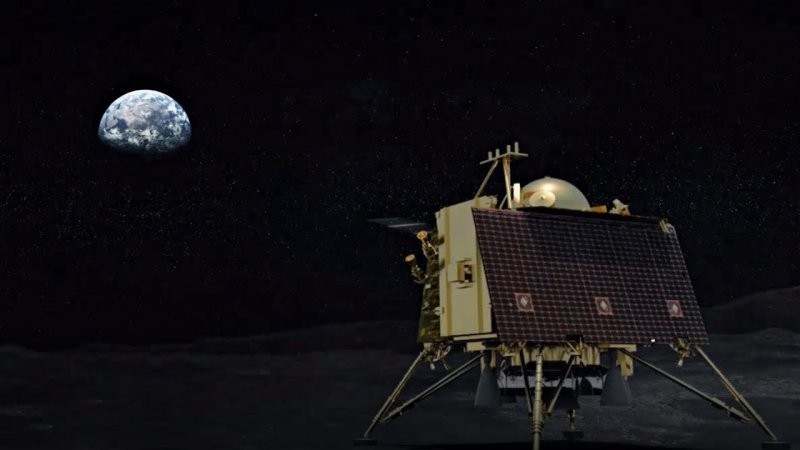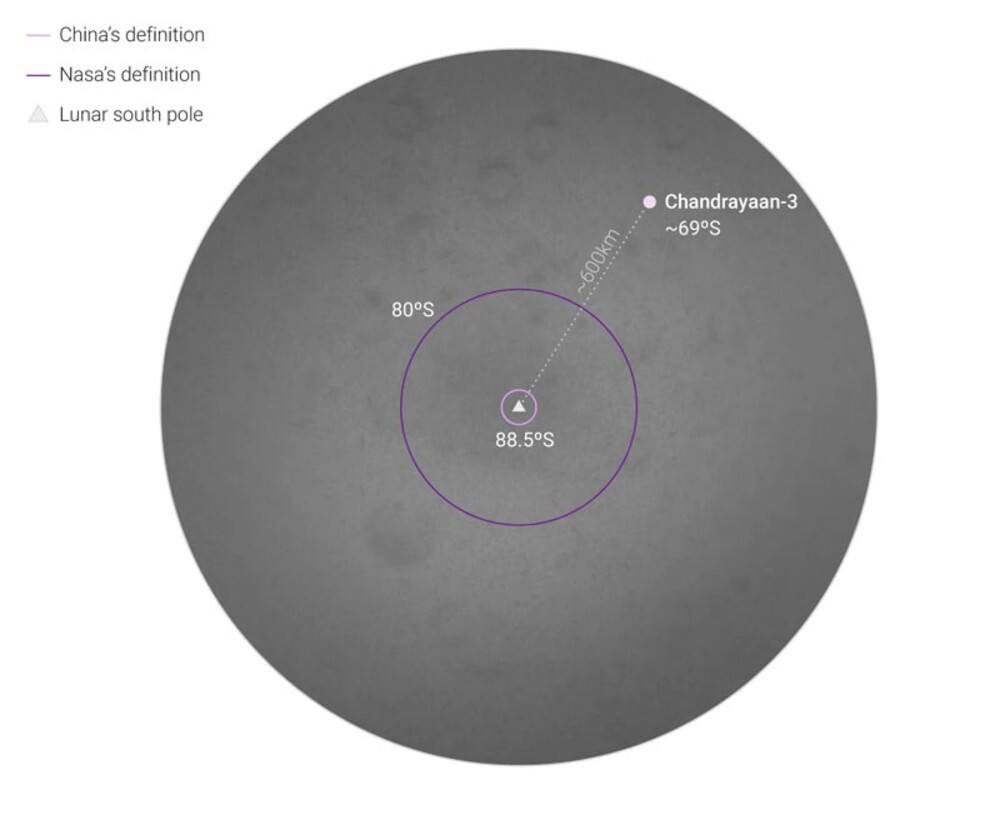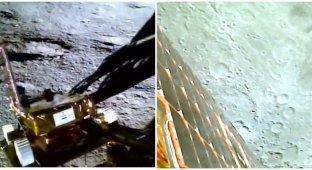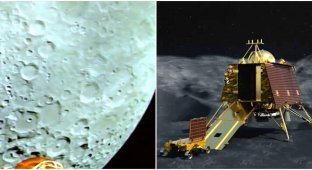China doubts the success of the Indian lunar mission (3 photos)
According to the Chinese scientist, the Indians were lying when they announced that the Vikram lander landed in the area of the unexplored South Pole of the Moon. 
Member of the Chinese Academy of Sciences, scientific director of the Chinese lunar program Ouyang Ziyuan said that the successes of India's lunar mission are exaggerated. Ziyuan does not question the landing of the Indian spacecraft on the surface of the Earth's satellite, but technically the Chandrayaan-3 mission cannot be considered the conquest of the previously unexplored southern strip of the Moon.
The father of the Chinese lunar exploration program noted that the landing site of the Indian module Vikram is located at 69 degrees south latitude, which is very far from the pole, whose coordinates are between 88.5 and 90 degrees.
“This is not true! The landing site of Chandrayaan-3 is not at the South Pole of the Moon, not in the South Pole of the Moon and not near the South Pole of the Moon,” the scientist said, adding that the Indian vehicle landed at a distance of 619 km from the polar region of the Moon . 
Ouyang Ziyuan
Note that, according to NASA, the south polar region of the Moon extends from 80 to 90 degrees south latitude, but the Chinese believe that this area is even smaller - from 90 ° to 88 ° south latitude due to the rotational inclination of the Earth satellite of 1.5 degrees. 
Vikram's landing site and differences in the definition of the South Pole region between NASA and China. However, even by American standards, the Indian spacecraft landed quite far from the South Pole
It cannot be denied that India took a big step forward, managing to land a module on the surface of the Moon and becoming the “fourth lunar power,” but the country did not become the first country to conquer the South Pole. The Pragyan lunar rover failed to complete its main task of discovering ice reserves. Perhaps this will be done by the Chinese Chang'e-7 rover, which will be launched to the South Pole of the Moon in 2026.


























